 2012 Mazda BT-50 Dual Cab II Dimensions, Size & Specs
2012 Mazda BT-50 Dual Cab II Dimensions, Size & SpecsMeasurements of the 2012 Mazda BT-50 Dual Cab II, engineered for optimal performance and comfort
| Dimensions | |
|---|---|
| Length: | 5365-5373 mm211.2-211.5 in17.6-17.6 ft |
| Width: | 1850 mm72.8 in6.1 ft |
| Height: | 1815-1821 mm71.5-71.7 in6.0-6.0 ft |
| Ground Clearance: | 200-205 mm7.9-8.1 in0.7-0.7 ft |
| Weight Specifications | |
| Curb Weight: | 1944-2103 kg4286-4636 lbs |
| Maximal permitted Weight: | 3200 kg7055 lbs |
| Tire Specifications | |
| Rims Sizes: | 16-inch rims:
|
| Tire Sizes: |
|
The Mazda BT-50 Dual Cab II, produced from 2011 to 2014 and model year 2012, is a robust mid-size pickup truck designed for both utility and comfort. Measuring between 5365 and 5373 mm (211.2 - 211.6 inches) in length, it offers ample cargo and cabin space, making it suitable for work and recreational purposes. Its width stands at 1850 mm (72.8 inches), providing a stable and commanding presence on the road, while the height ranges from 1815 to 1821 mm (71.5 - 71.7 inches), balancing interior headroom with aerodynamic considerations.
The BT-50 Dual Cab II's curb weight varies between 1944 and 2103 kg (4287 - 4637 lbs), depending on configuration, supporting a maximum gross weight of up to 3200 kg (7055 lbs). This weight range ensures a strong load-carrying capacity while maintaining reliable handling characteristics. Ground clearance is particularly notable, positioned between 200 and 205 mm (7.9 - 8.1 inches), facilitating improved off-road capability and better ride comfort over uneven terrain.
The truck rides on rim sizes ranging from 7.0J x 16 to 8.0J x 17, paired with tire options including 255/70 R16 111T and 265/65 R17 112T. These tire specifications contribute to the vehicle’s durability and performance both on highways and rugged paths.
Overall, the Mazda BT-50 Dual Cab II stands out in the mid-size pickup segment thanks to its balanced size, respectable load limits, and practical design focused on versatility. Whether you require a dependable work vehicle or a versatile family pickup with off-road capability, the 2012 BT-50 offers dimensions and features tailored to diverse driving needs.
Discover the standout features that make the 2012 Mazda BT-50 Dual Cab II a leader in its class
Have a question? Please check our knowledgebase first.
The Mazda BT-50 Dual Cab II, produced from 2011 to 2014, has a length ranging between 5365 mm and 5373 mm (approximately 211.2 to 211.5 inches). This length gives the truck a substantial presence suited for both work and leisure purposes, balancing cargo space and maneuverability. The slight variation in length depends on specific model trims and configurations, but generally, it stays around this size, making it one of the larger pickups in its segment during its production years.
The width of the Mazda BT-50 Dual Cab II is 1850 mm (72.8 inches). This width contributes to stable handling, especially for a pickup truck, as it provides a broad footprint on the road. However, when it comes to parking and maneuvering in tight urban environments, this width might require extra attention. Overall, the width balances the interior space for passengers and cargo bed width, making it practical without being excessively wide.
The height of the Mazda BT-50 Dual Cab II varies between 1815 mm and 1821 mm (about 71.5 to 71.7 inches). This height provides a commanding driving position with excellent road visibility, which is typical for pickup trucks. Additionally, the height combined with a ground clearance of 200 mm to 205 mm (7.87 to 8.07 inches) allows the vehicle to handle off-road conditions and uneven terrain efficiently without compromising on-road stability.
The curb weight of the Mazda BT-50 Dual Cab II ranges from 1944 kg to 2103 kg (approximately 4287 to 4638 pounds). This weight reflects the truck's solid construction designed for durability and capability. A higher curb weight tends to reduce fuel efficiency but improves stability and towing capacity. The BT-50 balances weight and performance by offering robust towing and payload capabilities without excessively sacrificing fuel economy for a vehicle in its category.
The Mazda BT-50 Dual Cab II has a maximum weight or Gross Vehicle Weight Rating (GVWR) of up to 3200 kg (about 7055 pounds). GVWR is the limit set by the manufacturer for the total weight of the vehicle including passengers, cargo, and any additional equipment. This rating indicates the BT-50's ability to handle heavy loads safely, making it a reliable choice for those needing a truck for both everyday utility and tougher hauling tasks.
The Mazda BT-50 Dual Cab II came equipped typically with either 7.0J x 16 or 8.0J x 17 rims. The tire sizes matched these rims, usually 255/70 R16 111T or 265/65 R17 112T. Larger tires with higher sidewalls improve comfort and off-road capability by absorbing road irregularities better, while the rim size affects handling and aesthetics. Together, these rim and tire combinations provide a blend of ride comfort, performance, and durability fit for both urban and rugged terrains.
Given the BT-50 Dual Cab II's length of approximately 5365–5373 mm (about 211 inches) and width of 1850 mm (73 inches), fitting this pickup into a standard home garage depends on the garage dimensions. A typical single-car garage controls about 6000 mm (20 feet) in length and roughly 3000 mm (10 feet) in width, so the BT-50 can fit in lengthwise but leaves limited extra space for movement around the vehicle. Owners may find fitting it into narrower or shorter garages more challenging, especially when considering door clearance and ease of entry or exit.
Compared to the first generation Mazda BT-50 produced before 2011, the BT-50 Dual Cab II introduced in 2011 slightly increased in dimensions. The newer model is longer, with a length ranging around 5365–5373 mm compared to the earlier model's shorter length. Width and height also saw incremental changes to improve cabin comfort and cargo capacity. This generation brought advancements in ride height and ground clearance, enhancing off-road performance. Overall, the newer generation emphasized a better balance of urban usability and rugged utility compared to its predecessor.
In the mid-size pickup segment, the Mazda BT-50 Dual Cab II competes with models like the Ford Ranger, Toyota Hilux, and Mitsubishi Triton. Dimensionally, the BT-50 is similar in length and width to these competitors, typically around 5.3 to 5.4 meters long and 1.85 meters wide. The BT-50 shares many design elements and engineering with the Ford Ranger due to platform sharing agreements, offering comparable payload capacities and off-road capabilities. Its ground clearance and robust curb weight put it in line with other pickups designed for mixed on-road and off-road use, appealing to buyers seeking reliability and comfort.
The Mazda BT-50 Dual Cab II features a ride height or ground clearance of between 200 mm and 205 mm (approximately 7.87 to 8.07 inches). This elevated ground clearance is beneficial for navigating rough terrain, deep ruts, or obstacles without damaging the vehicle's underbody. The height also contributes to a commanding view over traffic, increased approach and departure angles for off-road driving, and improved versatility when traversing varied surfaces. Such clearance makes the BT-50 suitable for both rural utility work and adventurous driving scenarios.
Discover similar sized cars.
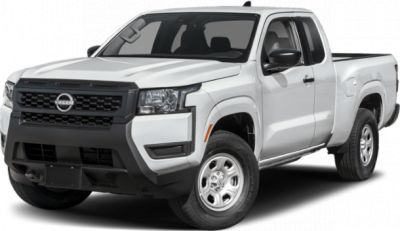
| Production: | 2024-present |
|---|---|
| Model Year: | 2025 |
| Length: | 5338 mm210.2 in |
| Width: | 2135 mm84.1 in |
| Height: | 1811-1824 mm71.3-71.8 in |
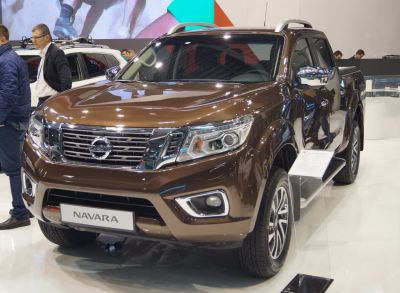
| Production: | 2015-2019 |
|---|---|
| Model Year: | 2015 |
| Length: | 5330 mm209.8 in |
| Width: | 2085 mm82.1 in |
| Height: | 1805 mm71.1 in |
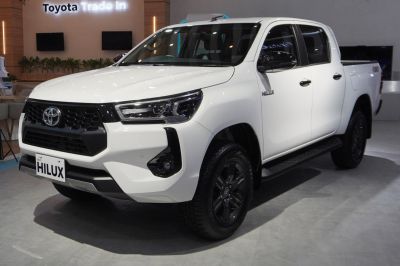
| Production: | 2024-2025 |
|---|---|
| Model Year: | 2024 |
| Length: | 5325 mm209.6 in |
| Width: | 1855 mm73.0 in |
| Height: | 1815 mm71.5 in |

| Production: | 2020-2024 |
|---|---|
| Model Year: | 2020 |
| Length: | 5325 mm209.6 in |
| Width: | 1855 mm73.0 in |
| Height: | 1815 mm71.5 in |
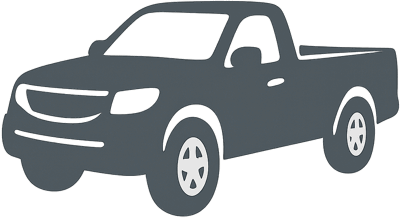
| Production: | 2020-2024 |
|---|---|
| Model Year: | 2020 |
| Length: | 5325 mm209.6 in |
| Width: | 1855 mm73.0 in |
| Height: | 1810 mm71.3 in |

| Production: | 2017-2020 |
|---|---|
| Model Year: | 2018 |
| Length: | 5330 mm209.8 in |
| Width: | 1855 mm73.0 in |
| Height: | 1810 mm71.3 in |
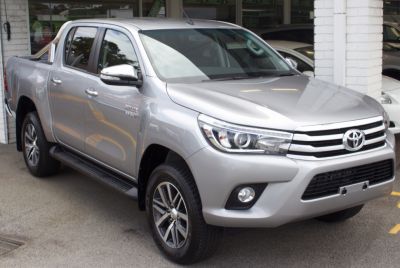
| Production: | 2015-2017 |
|---|---|
| Model Year: | 2016 |
| Length: | 5335 mm210.0 in |
| Width: | 1855 mm73.0 in |
| Height: | 1815 mm71.5 in |

| Production: | 2015-2017 |
|---|---|
| Model Year: | 2016 |
| Length: | 5335 mm210.0 in |
| Width: | 1855 mm73.0 in |
| Height: | 1810 mm71.3 in |
